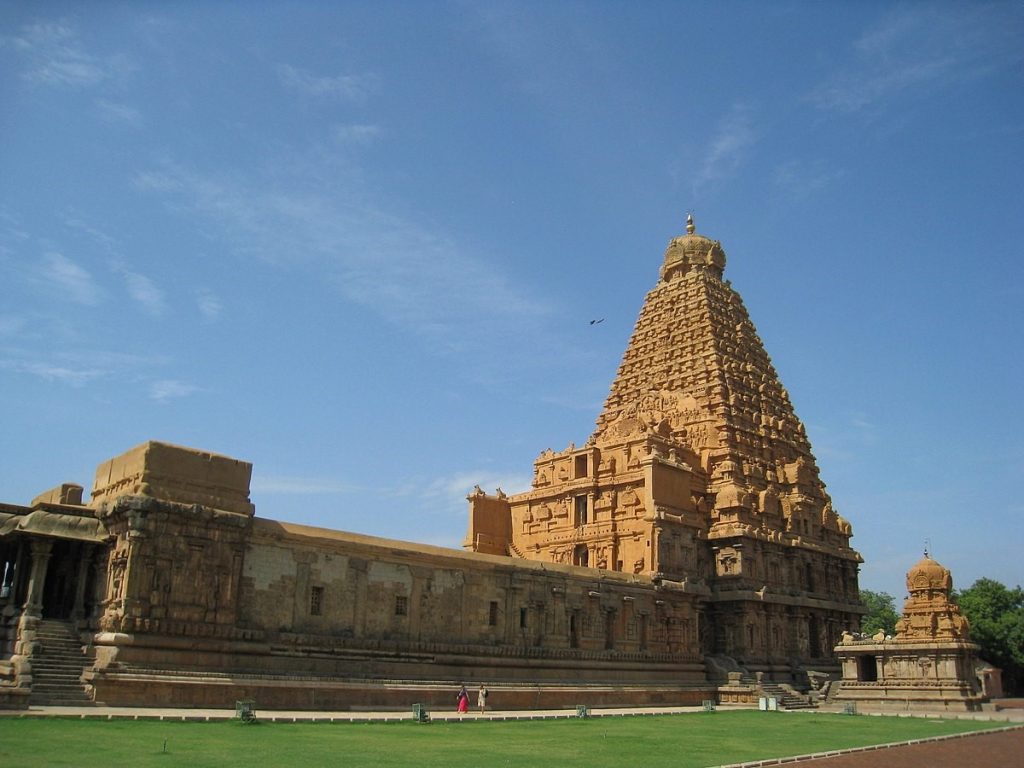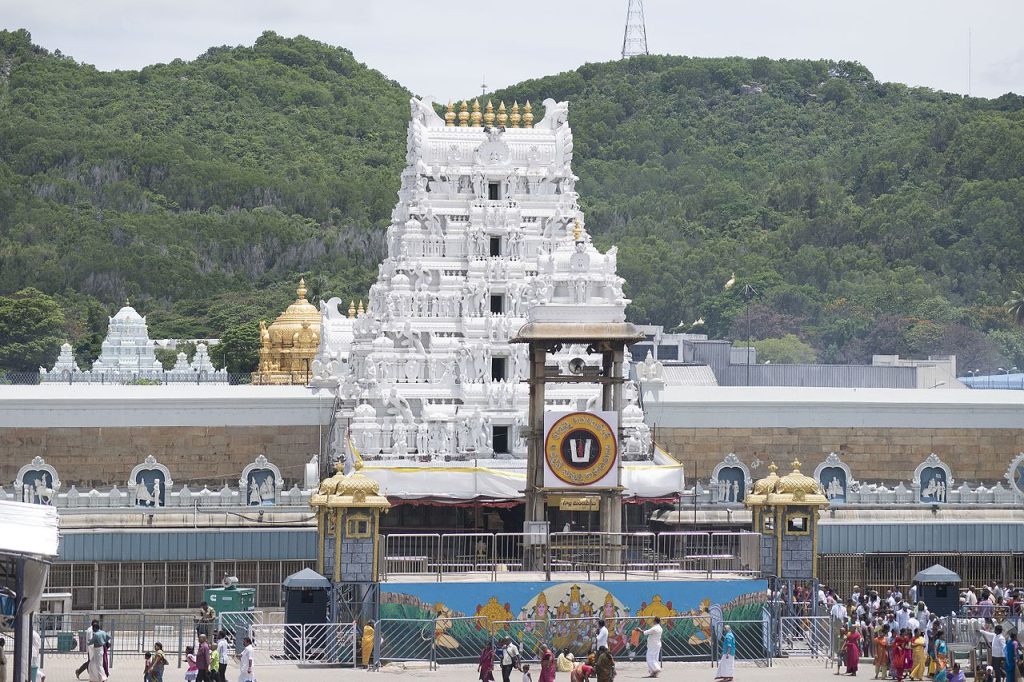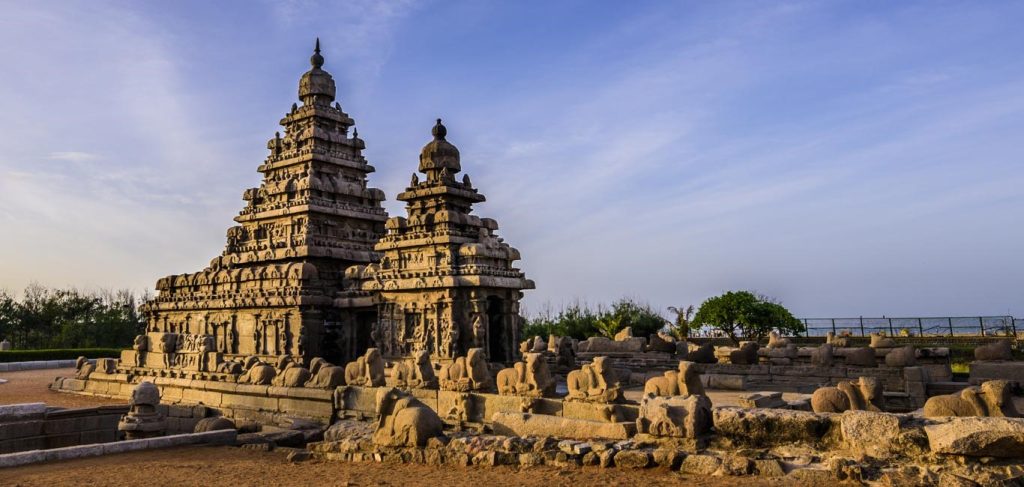India is a culturally and historically rich country with a millennium of history. Stunning and distinctive buildings honour celestial beings. Some buildings astonish us with their charisma, but they all wow us with their expansive complexes and architectural design. Specific locations in India survive solely due to a divine mystery or something else, defying all scientific principles.
The architectural style primarily prevalent in southern India, especially in the Dravidian-speaking regions, is called “Dravidian architecture.” This architectural style dates back several centuries, giving it a rich and ancient past. It is expected to refer to the people, customs, and languages of South India as “Dravidian.”
Hindu temples are most frequently linked with Dravidian architecture. These temples are distinguished by their unusual vimanas, or towers, with a conical or pyramidal shape. The imposing building above the temple’s inner sanctum is called the Vimana. Granite is a hardy and widely available stone in the region frequently used to build Dravidian temples. These buildings last longer because granite is used in them.
The imposing Raya Gopuram entry towers of Dravidian temples are richly decorated with elaborate sculptures and carvings. The primary entrance to the temple complex is frequently one of these gopurams. Large halls supported by pillars, known as mandapas, are a common feature of Dravidian temples utilised for various events, rites, and ceremonies. The halls are frequently embellished with intricate carvings and sculptures.

Dravidian architecture’s intricate carvings and sculptures are renowned for portraying scenes from Hindu mythology, religious tales, and various deities. A significant degree of artistic talent and craftsmanship can be seen in the carvings. Water tanks, called temple tanks or kalyanis, are standard in Dravidian temples. These tanks represent purity and provide water for ceremonies, which are practical and symbolic.
Types of architecture
The different architectural styles of Hindu temples have emerged due to significant geographical, climatic, cultural, ethnic, historical, and linguistic distinctions between the northern plains and the southern peninsula of India. Hindu temples have been divided into three categories according to their geographical location: the Dravidian or “southern” style, the Nagara or “northern” style, and the Vesara or hybrid style found in the Deccan between the other two.
A compound wall encloses the Dravida temple. A gopuram, or entrance doorway, is located in the centre of the front wall. Rather than having the curved shikhara of North India, the central temple tower, called Vimana in Tamil Nadu, is shaped like a stepped pyramid that rises geometrically. The word “shikhara” refers exclusively to the highest point of the South Indian temple, typically fashioned like an octagonal dome or a little stupa.
The South Indian-style gateway to a Hindu temple is called a gopuram. One of the main characteristics of the Dravidian architecture Kovils is this technique. The Kalasam, a spherical stone or metal finial, tops them. The gopurams serve as the temple’s entrances via the surrounding walls. The early gopuram constructions date back to the Pallava era. Under the Pandya emperors, these gates rose to prominence in the twelfth century as a prominent aspect of a Hindu temple’s external design. The enormous gopuram blocks out the view of the inner sanctuary. It also set the level of decoration for the inner shrine. Hindu shrines contain multiple gopurams.
Vimana In Dravidian Architecture

The Vimana is a prominent component in Dravidian architecture. The Vimana refers to the high, pyramid-shaped or conical structure that caps the central shrine of a Hindu temple. It is a characteristic of Dravidian temple buildings and essential to establishing their visual character.
Shikhara, also known as Śikhara in Sanskrit, literally means “mountain top” and describes the rising tower in many Hindu and Jain temples in North India. The most noticeable and conspicuous feature of a Hindu temple in North India is the shikhara that covers the Garbhagriha chamber, which houses the presiding deity’s altar. The word “vimana,” which is analogous in South India, refers to the entire structure, including the sanctum below, in contrast to “shikhara.” Shikhara is the name used in the south to refer to the vimana alone, or the top stage, typically a dome with a finial on top; this article focuses on the northern variant. The intricate entrance towers of South India should be distinct from the Southern Vimana.
The Vimana is a structure that rises vertically above the temple’s central shrine, also known as the sanctum sanctorum (Garbhagriha). It usually has a square base and is progressively narrower as it rises, giving the impression of a pyramid or stairway. Vimanas are lavishly decorated with dexterous carvings, sculptures, and reliefs. Hindu mythological events, religious stories, gods, celestial beings, and other ornamental motifs are all shown in these embellishments. The carvings express cultural and spiritual values while also serving aesthetic purposes.
The Vimana is thought to establish a link between the divine and the material world. It represents the cosmic axis. It represents the ascension and spiritual journey towards the heavenly presence within the sanctum. As a reflection of Hindu cosmology, the strata of the Vimana frequently correspond to various cosmic levels. Vimanas are often made utilising sturdy materials such as granite. Granite is used, which adds to the durability and stability of these enormous constructions.
Typically, a vimana is shaped like a multi-story pyramid or tala. Vimanas are classified into two categories: Mukhya vimana, which have five talas or more, and Jati vimanas, which have up to four talas. Gopurams are located in four directions on a typical Hindu temple designed in the Dravidian style: East is the main entrance, North and South are secondary entrances, and West is only opened on auspicious days when it is thought that we would ascend directly to Heaven.
The temple walls are usually square, and the outermost wall has four gopuras, one on each side, placed precisely in the centre of each wall. Depending on the temple’s size, this will go on to the following tier. The vimana is another name for the sanctum sanctorum and its tall roof, which houses the shrine of the central deity. With a few exceptions, where the roofs of the sanctum sanctorum are as well-known as the entire temple complex, these often take on less significance than the outer gopuram.
Nagara And Dravidian Style Of Architecture
The significant geographical, climatic, ethnic, racial, historical, and linguistic disparities between North and South India led to the diverse architectural forms of temple construction in those regions from the beginning. Temple architecture is categorised into three orders by the Vastu Shastras, the ancient canonical scriptures on architecture: the Nagara, also known as the Indo-Aryan or Northern style; the Dravida, also known as the Southern style; and the Vesara, or Mixed style. Additionally, there are distinct regional styles in outlying regions such as Bengal, Kerala, and the Himalayas.
Two separate architectural styles, Nagara and Dravidian, have their roots in ancient India and are mostly connected to Hindu temple construction. These styles have developed over many years and are distinguished by their layout, design, and ornamental elements.
10 Famous Artists Who Worked for Gita Press and Leela Chitra Mandir





